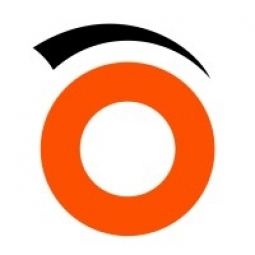公司规模
Large Corporate
地区
- America
国家
- United States
产品
- Zenoss
- ServiceNow
技术栈
- Linux
- Windows
实施规模
- Enterprise-wide Deployment
影响指标
- Customer Satisfaction
- Productivity Improvements
技术
- 应用基础设施与中间件 - API 集成与管理
- 基础设施即服务 (IaaS) - 混合云
适用行业
- 医疗保健和医院
适用功能
- 商业运营
用例
- 基础设施检查
- 预测性维护
服务
- 系统集成
关于客户
Surescripts 是一家总部位于弗吉尼亚州的公司,专门从事处方电子传输、临床交流以及医疗记录和福利的健康信息交换 (HIE)。该公司在混合环境中运营,拥有本地基础设施和云实例。Surescripts 每年处理 80 万家供应商和 2.7 亿患者之间的超过 60 亿笔交易。该公司的 IT 环境包括物理和虚拟基础设施、云部署、企业级存储以及使用 Linux 和 Windows 技术的服务器。
挑战
Surescripts 的主要关注点是无缝维护大量安全交易并确保它们正确路由 — 因此 Surescripts IT 部门面临着巨大的压力,需要立即响应服务需求并毫不拖延地解决问题。Surescripts 致力于成为更可靠、更可预测的 IT 合作伙伴,定义严格的流程和服务级别协议,以建立与客户(公司内的其他部门)的信任。2013 年,他们着手大力改善企业范围的系统管理,并实施 IT 服务管理 (ITSM) 和 IT 基础架构库 (ITIL) 流程方面的最佳实践。作为此次转型的核心部分,他们选择 ServiceNow 作为 ITSM 解决方案,并希望获得一个与 ServiceNow 集成的全面监控解决方案,通过消除来自多个监控工具的多个警报的“噪音”来缩短响应时间。
解决方案
经过大量的尽职调查,Zenoss 成为 Surescripts 寻找专注于监控混合 IT 环境并与 ServiceNow 紧密集成的单一平台的不二之选。Zenoss 及其 ServiceNow 集成是统一 Surecripts 运营团队的关键推动因素——让他们协作并在管理服务时了解全局,并作为一个整体尽快解决问题。Zenoss 和 ServiceNow 集成功能通过在 ServiceNow 中自动创建、更新和关闭自动填充的工单来提高运营效率。它通过双向同步事件工单数据改善了 IT Ops 和 ITSM 团队之间的协调,并实现了更快的解决问题和缩短了平均修复时间。
运营影响

Case Study missing?
Start adding your own!
Register with your work email and create a new case study profile for your business.
相关案例.

Case Study
Hospital Inventory Management
The hospital supply chain team is responsible for ensuring that the right medical supplies are readily available to clinicians when and where needed, and to do so in the most efficient manner possible. However, many of the systems and processes in use at the cancer center for supply chain management were not best suited to support these goals. Barcoding technology, a commonly used method for inventory management of medical supplies, is labor intensive, time consuming, does not provide real-time visibility into inventory levels and can be prone to error. Consequently, the lack of accurate and real-time visibility into inventory levels across multiple supply rooms in multiple hospital facilities creates additional inefficiency in the system causing over-ordering, hoarding, and wasted supplies. Other sources of waste and cost were also identified as candidates for improvement. Existing systems and processes did not provide adequate security for high-cost inventory within the hospital, which was another driver of cost. A lack of visibility into expiration dates for supplies resulted in supplies being wasted due to past expiry dates. Storage of supplies was also a key consideration given the location of the cancer center’s facilities in a dense urban setting, where space is always at a premium. In order to address the challenges outlined above, the hospital sought a solution that would provide real-time inventory information with high levels of accuracy, reduce the level of manual effort required and enable data driven decision making to ensure that the right supplies were readily available to clinicians in the right location at the right time.

Case Study
Gas Pipeline Monitoring System for Hospitals
This system integrator focuses on providing centralized gas pipeline monitoring systems for hospitals. The service they provide makes it possible for hospitals to reduce both maintenance and labor costs. Since hospitals may not have an existing network suitable for this type of system, GPRS communication provides an easy and ready-to-use solution for remote, distributed monitoring systems System Requirements - GPRS communication - Seamless connection with SCADA software - Simple, front-end control capability - Expandable I/O channels - Combine AI, DI, and DO channels

Case Study
Driving Digital Transformations for Vitro Diagnostic Medical Devices
Diagnostic devices play a vital role in helping to improve healthcare delivery. In fact, an estimated 60 percent of the world’s medical decisions are made with support from in vitrodiagnostics (IVD) solutions, such as those provided by Roche Diagnostics, an industry leader. As the demand for medical diagnostic services grows rapidly in hospitals and clinics across China, so does the market for IVD solutions. In addition, the typically high cost of these diagnostic devices means that comprehensive post-sales services are needed. Wanteed to improve three portions of thr IVD:1. Remotely monitor and manage IVD devices as fixed assets.2. Optimizing device availability with predictive maintenance.3. Recommending the best IVD solution for a customer’s needs.

Case Study
HaemoCloud Global Blood Management System
1) Deliver a connected digital product system to protect and increase the differentiated value of Haemonetics blood and plasma solutions. 2) Improve patient outcomes by increasing the efficiency of blood supply flows. 3) Navigate and satisfy a complex web of global regulatory compliance requirements. 4) Reduce costly and labor-intensive maintenance procedures.

Case Study
Cloud-based healthcare solution for Royal Philips
Royal Philips wanted to launch its cloud-based healthcare solution HealthSuite Digital Platform in China to deliver services to help cope with challenges related to urbanization and population growth. Philips wanted to achieve this goal by combining mobile, cloud computing and big data technologies. To bring this platform and product to market, Philips required cloud computing and local technical service capabilities in China, in addition to a flexible IT infrastructure that could handle user requests.








